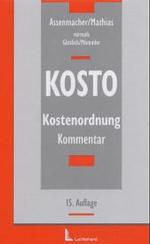- ホーム
- > 洋書
- > 英文書
- > Politics / International Relations
基本説明
Draws on contemporary newspapers and journals and over 120 manuscript collections, some not previously consulted by students of the House.
Full Description
A full and comprehensive assessment of the place of the 18th-century peerage and House of Lords.
Uses statistical and anecdotal evidence to create a variegated portrait of the nobility, its political outlook, and the ways in which the nobility's multifarious roles combined to shape its members' conduct as peers of parliament
Challenges the assumption that the Lords remained a creature of the crown and demonstrates that peers and bishops were useful, informed, and broadly connected legislators
Incorporates the results of recent research on the role of ideology in 18th-century British politics and the legislative business of parliaments
Draws on contemporary newspapers and journals and over 120 manuscript collections, some not previously consulted by students of the House
Offers new insights into the Lords' changing relations with the crown and the Commons, traces the metamorphosis of the 'party of the crown' into an ultra-tory connection, and demonstrates that even as it resisted some political and social reform, the Lords was a useful legislative chamber that adapted effectively to the rising volume of business
Contents
Acknowledgments. Note on Titles.
Abbreviations.
Introduction.
The Membership.
1. The Peerage, 1760-1811: A Group Portrait.
2. The Representative Peers of Scotland and Ireland.
3. The Bishops.
4. Attendance and Participation.
Politics.
5. Political Connections: An Overview.
6. The House of Lords and Politics at Westminster, 1761-80.
7. The Lords, the Coalition and the India Bill, 1780-4.
8. Factions and Parties, 1784-1811.
9. The King and the 'Party of the Crown', 1784-1811.
10. Political Leadership, 1784-1811.
11. Public Opinion and Public Pressure, 1784-1811.
Legislation.
12. Lords and Commons (1): Partners in Legislation.
13. Lords and Commons (2): MPs and their Patrons.
14. Lords and Commons (3): Procedure, Leadership and Inquiry.
15. Interest Groups.
16. 'Virtual Representation' and the House of Lords.
Epilogue.
Appendices.
Bibliography.
Index.








